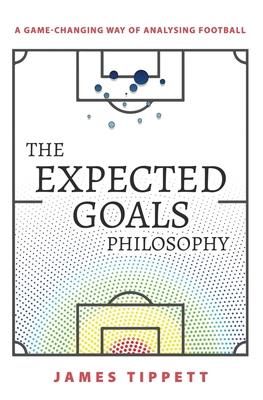The Expected Goals method is football's best-kept secret. The metric gives unparalleled insight into which teams and players are performing at the highest level.
Professional gamblers have used Expected Goals to make millions through football betting. Club scouts have used Expected Goals to identify hidden gems in the transfer market. And the media have recently started using Expected Goals to offer more profound insight in their broadcasts.
Despite this, most ordinary fans still don't understand what the Expected Goals method is - or appreciate the significant impact that it is set to have on the sport in coming years.
Expected Goals (otherwise known as xG) was originally conjured up by a small corner of the online football analytics community. It didn't take long for professional gamblers to begin using xG to predict match outcomes. These bettors utilised the Expected Goals method to turn over hundreds of millions of pounds from the bookmakers.
Before long, football clubs had caught on to the ground-breaking insight given by xG. Brentford FC were leaders in this field; their data-driven approach has led them to a first ever promotion to the Premier League. In the last five years, the small West London side have turned over more than 150m in transfer revenue from their use of the Expected Goals method in player recruitment.
More recently, the Expected Goals method has been adopted by the media as a form of insight. Fans are finally catching on to the pioneering means of football analysis. Soon enough, anyone who doesn't understand the Expected Goals philosophy will be left behind.
"This is worth a read for anyone sceptical about xG" - Jamie Carragher
"An excellent choice for any level of knowledge and interest on the subject. I cannot recommend it enough" - The Good Gambling Guide
"A great read" - David Jones (Sky Sports presenter)

The Expected Goals Philosophy: A Game-Changing Way of Analysing Football
The Expected Goals method is football's best-kept secret. The metric gives unparalleled insight into which teams and players are performing at the highest level.
Professional gamblers have used Expected Goals to make millions through football betting. Club scouts have used Expected Goals to identify hidden gems in the transfer market. And the media have recently started using Expected Goals to offer more profound insight in their broadcasts.
Despite this, most ordinary fans still don't understand what the Expected Goals method is - or appreciate the significant impact that it is set to have on the sport in coming years.
Expected Goals (otherwise known as xG) was originally conjured up by a small corner of the online football analytics community. It didn't take long for professional gamblers to begin using xG to predict match outcomes. These bettors utilised the Expected Goals method to turn over hundreds of millions of pounds from the bookmakers.
Before long, football clubs had caught on to the ground-breaking insight given by xG. Brentford FC were leaders in this field; their data-driven approach has led them to a first ever promotion to the Premier League. In the last five years, the small West London side have turned over more than 150m in transfer revenue from their use of the Expected Goals method in player recruitment.
More recently, the Expected Goals method has been adopted by the media as a form of insight. Fans are finally catching on to the pioneering means of football analysis. Soon enough, anyone who doesn't understand the Expected Goals philosophy will be left behind.
"This is worth a read for anyone sceptical about xG" - Jamie Carragher
"An excellent choice for any level of knowledge and interest on the subject. I cannot recommend it enough" - The Good Gambling Guide
"A great read" - David Jones (Sky Sports presenter)